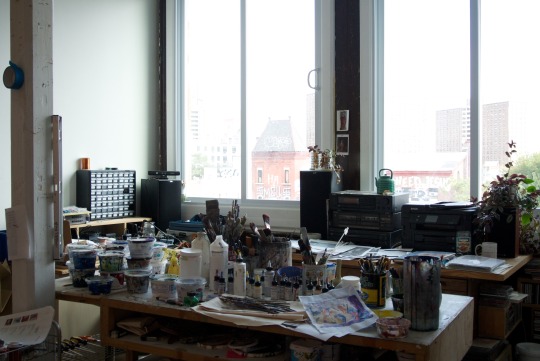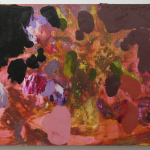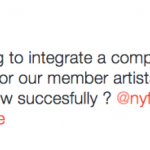Fellows at 30 / Fiscal Sponsorship: Theresa Ganz and Angelina Gualdoni
“The NYFA Fellowship is one of the few that supports studio based artists while not requiring a specific project, which is extremely generous and increasingly rare.”
– Angelina Gualdoni
Regina Rex is an artist-run gallery founded in 2010, at 1717 Troutman Street on the Bushwick / Ridgewood border. The space was created by artists to share the work of other artists. Regina Rex currently represents a roster of artists, curates numerous group exhibitions and is fiscally sponsored by NYFA. Two members of the Regina Rex collective, Theresa Ganz and Angelina Gualdoni, generously shared their time with NYFA Current to discuss collaboration, Regina Rex and life as a working artists. Theresa is the project director for NYFA fiscal sponsorship and Angelina is a two-time painting fellow.
Regina Rex Current Exhibition: EJ Hauser: Amphibian
Dates: On view through December 6, 2015
More information: http://reginarex.org/exhibition.asp?exid=559
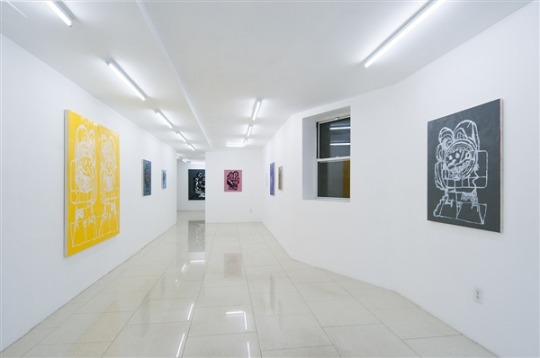
NYFA: Regina Rex is collectively run by a group of artists. How did the founding members decide to embark on this project? How do you navigate logistical decisions and planning within a team environment?
TG: I think each member would probably have their own answer to this, but I will try. Being an artist can be a very solitary endeavor. Starting Regina Rex with so many members was a way to keep a conversation about contemporary art going both within the group and with the artists we show. It has allowed us to engage with the art world in a way that is supportive of fellow artists, rather than competitive. Though all the members are artists, we don’t show our own work. Decision making is difficult with so many members and certainly not efficient but we try to come to consensus as often as possible. This means that things are hashed out over long periods of time. Typically a member presents an idea for a show and then it gets kicked around and workshopped by the group. We meet every week and discuss both day to day operations and ideas for shows.
AG: The majority of Regina Rex members came out of graduate programs in Chicago where there is a strong tradition of artist-run gallery spaces. Each of the founding members made an initial six month commitment and by sheer luck we were a really well balanced cohort; we even had one of every astrological sign. Pretty early on we decided that we were not going to show our own work and that I think distinguished us from a lot of other Bushwick area galleries at the time. We wanted to use our programming to both support artists who we thought were not getting enough attention as well as use curation as a tool to explore ideas that might or might not surface in our own work. Weekly meetings help us determine our program and plan, and range from chit chat to pretty intense discussions about our purpose and drive. Everyone has opinions, and we seek consensus about shows and artists, but usually wherever there is the most energy and excitement is the direction that we go towards…
NYFA: Currently, Regina Rex calls the Lower East Side home, after starting out at the border of Ridgewood and Bushwick. How did you decide the new neighborhood would be a good fit for the gallery? What factors did you consider?
TG: It was really determined by the space we could find and proximity to other like-minded galleries. We loved our space in Bushwick and were sad to leave, but the move to Manhattan has been the start of a new and exciting chapter. We certainly have more foot traffic now.
AG: The Lower East Side (LES) made a lot of sense on a number of different levels. One reason is that we had been doing New Art Dealers Alliance (NADA) fairs for a number of years and the NADA community is very much based on the LES. The second reason has to do with the economics of real estate. When we lost our space in Bushwick we initially planned to stay in that neighborhood, but everywhere that we looked had such pressure from development. It actually felt like there was more flexibility on the LES than in Brooklyn.
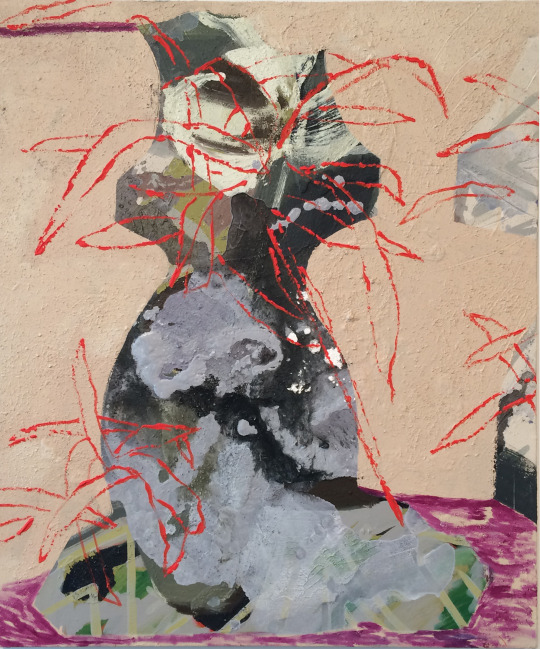
NYFA: Regina Rex is now five years old and this seems to be a fruitful and exciting time for the organization. How does Regina Rex measure its success? What advice can you offer to emerging artist-run exhibition spaces or organizations?
TG: I think we mostly measure our success in how much we have been able to help the artists we work with in their careers. Its very satisfying to see an artist whose work you believe in begin to get recognition from collectors, museums, magazines and newspapers.
I think my only piece of advice for artist run spaces is that many hands make light work. We all have our own practices that we are committed to so none of us could take on the load of Regina Rex full time.
AG: Outside of just continuing to exist for five years, (which in itself is success and kind of amazing) it is gratifying to help build other artist’s careers. There is also a certain excitement that comes with more established artists trusting you with both their work and your ideas. Recently for one of our shows we reached out to Judy Chicago to show some of her photographs. She ended up lending us the work and the photos were amazing and fit really well in the show. To have people you studied in school and look up to entrust you with their work is pretty exciting, and demonstrates a degree of success for sure.
In terms of advice, I think the hardest question is, “why do you need to exist?”: this is not a question that we started with, but it’s one that we bump into often. It’s also important to think about what you are contributing to the greater New York dialogue: where you want to direct conversation and questions, how to sway the conversation towards artists and topics that you care about. It becomes as much about making our community a place where substantial conversations can happen about modes of thinking and making, what we value, as well as the people we want to see gain recognition.
NYFA: Regina Rex became a fiscally sponsored project with NYFA in 2014. Why did the gallery decide to pursue sponsorship and what opportunities has sponsorship made available?
AG: Fiscal sponsorship made sense to us on many levels; we were constantly examining the benefits of nonprofit status versus commercial gallery status. Nonprofit made sense on some levels, but organizationally it didn’t fit our model of curating, and the timeline and cost seemed onerous. NYFA’s fiscal sponsorship allows us to access grants and fundraise directly, while giving some tax benefits to those who are generous enough to donate to us. It’s essentially a way of straddling these two categories, commercial and nonprofit, which feels rights, since we, like many other artist run spaces, aren’t considering commercial viability first and foremost in the work that we’re exhibiting, but don’t fit neatly into a lot of the requirements for a nonprofit either.
NYFA: What challenges do you face as a non-commercial gallery? How do you distinguish yourselves in a city full of art?
TG: The greatest challenges in New York are the same for us as for everyone else which is of course space, money and time- there is never enough and yet….
I think the way we aim to distinguish ourselves is to always put on the best possible show- we get there by constantly challenging each other and refining our ideas.
AG: In terms of distinguishing ourselves, I think that we are doing some pretty interesting programming, particularly the inter-generational shows, which is an approach I don’t often see other places. Recently we’ve paired Karsten Krejcarek and John Dilg as well as Jonathan Butt and Mernet Larsen. It seems like the work is connected through subject matter and content rather than aesthetics, and that’s where substantive and weird discussions happen.

NYFA: Seeing as you just received a NYFA fellowship, do you have any large-scale projects or happenings on the horizon? How did the fellowship from NYFA impact you in 2008 and again in 2015?
AG: I’ll be showing new work with Artadia at NADA Miami in December, and will have my third solo show with Asya Geisberg Gallery in New York in late February.
Though the surrounding conditions were quite different, NYFA’s fellowship has enabled me to devote the majority of my time to painting in both 2008 and 2015. The NYFA fellowship is one of the few that supports studio based artists while not requiring a specific project, which is extremely generous and increasingly rare.
The conditions of 2008 were pretty different both personally and globally – in 2008 I was working solely as an artist, and dating my husband, but had no kid, and a small artistic community. I had plenty of time, but little financial stability, as I was dependent on painting sales to pay the bills – a prospect that become impossible that year as all markets cratered, thus the incredibly timeliness of that fellowship.
In 2015 I am more financially stable, have a much bigger community (largely due to Regina Rex) and many more obligations. I’m currently on sabbatical, which allows me the luxury of agency and some time, but less money. So by luck or pluck the two fellowships and NYFA in general have been clutch in facilitating my work and Regina Rex and our contributions towards the greater NYC art communities.
Follow the work of past and present NYFA Fellows on Twitter at #NYFAFellows30 and find out more about the activities planned for our 30th anniversary on our website. NYFA’s Artists’ Fellowship Program awards $7,000 grants to individual artists in New York State. Applications are currently open with a January 28 deadline.
Are you interested in using NYFA Fiscal Sponsorship to support your next great idea? Check out more details here. Applications are currently open; December 31 is then next deadline and there are deadlines throughout the year.
– Madeleine Cutrona (Program Assistant, Fiscal Sponsorship) and Madeline Scholl (Program Associate, Alumni Relations and 30th Anniversary)
Images, from Top: Slab 2 by Theresa Ganz, 2013; Mirror by Angelina Gualdoni, 2015, image courtesy of the artist and Asya Geisberg Gallery; Installation view of EJ Hauser: Amphibian from Regina Rex website; Slip by Angelina Gualdoni, Acrylic on Canvas, 2015; Image of Angelina Gualdoni’s studio by Madeline Scholl, 2015.

